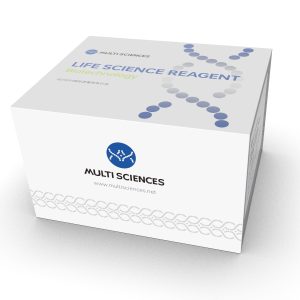HGNC ID: 11529
Target Abstract: Epithelial cell adhesion molecule (EpCAM), also known as CD326, is a transmembrane glycoprotein mediating Ca2+-independent homotypic cell-cell adhesion in epithelia. EpCAM is also involved in cell signaling, migration, proliferation, and differentiation. Additionally, EpCAM has oncogenic potential via its capacity to upregulate c-myc, e-fabp, and cyclins A & E. Since EpCAM is expressed exclusively in epithelia and epithelial-derived neoplasms, EpCAM can be used as diagnostic marker for various cancers. It appears to play a role in tumorigenesis and metastasis of carcinomas, so it can also act as a potential prognostic marker and as a potential target for immunotherapeutic strategies.
EPCAM Target Infomation Overview
- Target Symbol: EPCAM, epithelial cell adhesion molecule
- Gene Groups: CD molecules; MicroRNA protein coding host genes
- Alias: Ly74; TROP1; GA733-2; EGP34; EGP40; EGP-2; KSA; CD326; Ep-CAM; HEA125; KS1/4; MK-1; MH99; MOC31; MOC-31; 323/A3; 17-1A; TACST-1; CO-17A; ESA; BerEp4; Ber-Ep4; M4S1; MIC18; TACSTD1
- Alias Names: antigen identified by monoclonal antibody AUA1; tumor-associated calcium signal transducer 1; trophoblast cell surface antigen 1
EPCAM, epithelial cell adhesion molecule Target Infomation by Species
- Human
- Mouse
- Rat
Human EPCAM Target Information
- Target Symbol: EPCAM, epithelial cell adhesion molecule
- Alias:
- adenocarcinoma-associated antigen
- Ber-Ep4
- BerEp4
- cell surface glycoprotein Trop-1
- CO-17A
- CO17-1A
- DIAR5
- EGP
- EGP-2
- EGP314
- EGP34
- EGP40
- Ep-CAM
- epithelial glycoprotein 314
- ESA
- GA733-2
- hEGP-2
- HNPCC8
- human epithelial glycoprotein-2
- KS1/4
- KSA
- LYNCH8
- M4S1
- major gastrointestinal tumor-associated protein GA733-2
- membrane component, chromosome 4, surface marker (35kD glycoprotein)
- MIC18
- MK-1
- MOC-31
- TACST-1
- TACSTD1
- TROP1
- trophoblast cell surface antigen 1
- tumor-associated calcium signal transducer 1
- NCBI_Gene: 4072
- UniProtKB: P16422
Human EPCAM Predicted Functions
Predicted to enable cadherin binding activity involved in cell-cell adhesion. Involved in several processes, including negative regulation of cell-cell adhesion mediated by cadherin; positive regulation of stem cell proliferation; and regulation of gene expression. Located in several cellular components, including basolateral plasma membrane; bicellular tight junction; and lateral plasma membrane. Implicated in congenital diarrhea 5 with tufting enteropathy and hereditary nonpolyposis colorectal cancer type 8. Biomarker of hepatocellular carcinoma.
Mouse Epcam Target Information
- Target Symbol: Epcam, epithelial cell adhesion molecule
- Alias:
- CD326
- EGP-2
- Egp314
- Ep-CAM
- EpCAM
- EpCAM1
- epithelial glycoprotein 314
- GA733-2
- gp40
- Ly74
- lymphocyte antigen 74
- panepithelial glycoprotein 314
- Tacstd1
- TROP1
- tumor-associated calcium signal transducer 1
- NCBI_Gene: 17075
Mouse Epcam Predicted Functions
Predicted to enable cadherin binding activity involved in cell-cell adhesion. Involved in ureteric bud development. Located in cell surface. Is expressed in several structures, including alimentary system; central nervous system; genitourinary system; respiratory system; and sensory organ. Used to study congenital diarrhea 5 with tufting enteropathy. Human ortholog(s) of this gene implicated in congenital diarrhea 5 with tufting enteropathy and hereditary nonpolyposis colorectal cancer type 8. Orthologous to human EPCAM (epithelial cell adhesion molecule).
Rat Epcam Target Information
- Target Symbol: Epcam, epithelial cell adhesion molecule
- Alias:
- Egp314
- ep-CAM
- epithelial glycoprotein 314
- Tacstd1
- tumor-associated calcium signal transducer 1
- NCBI_Gene: 171577
Rat Epcam Predicted Functions
Enables cadherin binding activity involved in cell-cell adhesion. Involved in cell-cell adhesion via plasma-membrane adhesion molecules; negative regulation of apoptotic process; and positive regulation of cell motility. Located in bicellular tight junction; cell surface; and lateral plasma membrane. Biomarker of middle cerebral artery infarction. Human ortholog(s) of this gene implicated in congenital diarrhea 5 with tufting enteropathy and hereditary nonpolyposis colorectal cancer type 8. Orthologous to human EPCAM (epithelial cell adhesion molecule).

